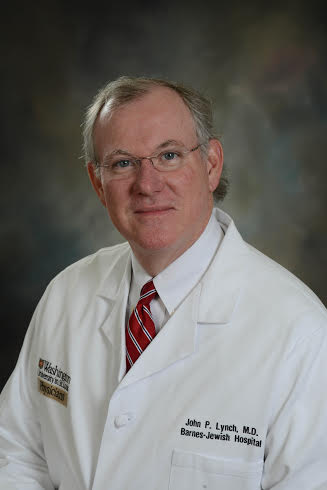Hospitals, health systems and healthcare providers have always been evaluated on the quality of care they provide. However, as payment models shift, providing high-quality care is now more important than ever.
Here, five hospital and health system CMOs reflect on what high-quality care really means, what it looks like, how it's measured and how they promote it in their organizations.
Participants in the roundtable include:
Stanley Ashley, MD, CMO of Brigham and Women's Hospital (Boston)
Dennis Lund, MD, CMO of Stanford Children's Health and Lucile Packard Children's Hospital Stanford (Palo Alto, Calif.)
John Lynch, MD, CMO and vice president of Barnes-Jewish Hospital (St. Louis)
Stephen Moore, MD, CMO of CHI St. Luke's Health (Houston)
Suzanne White, MD, CMO and chief academic officer of Detroit Medical Center
Question: How do you define "high-quality" care?
 Dr. Stanley Ashley: There have been many efforts to define high-quality care. I think the Institute of Medicine's definition is as useful as any — care that is safe, effective, patient-centered, timely, efficient and equitable.
Dr. Stanley Ashley: There have been many efforts to define high-quality care. I think the Institute of Medicine's definition is as useful as any — care that is safe, effective, patient-centered, timely, efficient and equitable.
 Dr. Dennis Lund: Measuring quality is a tricky subject in healthcare, as there is no exact definition. There are the givens, like patient satisfaction, accessibility, affordability and, of course, outcomes. And yes, low complications and reasonable costs. All play a role in quality. But there is also a less quantifiable quality measurement, one that a patient or patient family knows and feels when their overall patient experience is one of great value.
Dr. Dennis Lund: Measuring quality is a tricky subject in healthcare, as there is no exact definition. There are the givens, like patient satisfaction, accessibility, affordability and, of course, outcomes. And yes, low complications and reasonable costs. All play a role in quality. But there is also a less quantifiable quality measurement, one that a patient or patient family knows and feels when their overall patient experience is one of great value.
 Dr. John Lynch: I think the triple aim that was started about 10 years ago by the Institute for Healthcare Improvement to define high-quality care is still relevant today. It is care that is patient-centered, focused on the patient experience, as well as maximizing the outcomes for individual patients. It is also organized in a way that incorporates population health issues and uses population health tools to support groups of patients with similar problems. It uses evidence-based guidelines for care across groups of patients and is cost efficient.
Dr. John Lynch: I think the triple aim that was started about 10 years ago by the Institute for Healthcare Improvement to define high-quality care is still relevant today. It is care that is patient-centered, focused on the patient experience, as well as maximizing the outcomes for individual patients. It is also organized in a way that incorporates population health issues and uses population health tools to support groups of patients with similar problems. It uses evidence-based guidelines for care across groups of patients and is cost efficient.
 Dr. Stephen Moore: I begin to look at this from a consumer or patient perspective more than from our own perspective these days. I think three key pieces surround quality. One is access. For people — regardless of whether they have complex issues — can you provide access to educational resources or availability when they need treatment or consultative experience? The second is around customer service and satisfaction. How are you going to treat them, how are you going to explain their treatment and how are you going to engage them in their care? The third piece is affordability. From a health system perspective, we take those issues at the core and then add safety and consistency. So, don't under- or over-treat patients, which can result in harm as well.
Dr. Stephen Moore: I begin to look at this from a consumer or patient perspective more than from our own perspective these days. I think three key pieces surround quality. One is access. For people — regardless of whether they have complex issues — can you provide access to educational resources or availability when they need treatment or consultative experience? The second is around customer service and satisfaction. How are you going to treat them, how are you going to explain their treatment and how are you going to engage them in their care? The third piece is affordability. From a health system perspective, we take those issues at the core and then add safety and consistency. So, don't under- or over-treat patients, which can result in harm as well.
 Dr. Suzanne White: I define high-quality care as care that is safe, timely, efficient, evidence-based and patient-centered. As healthcare providers, it is our responsibility to continuously work to do research, explore new ways to provide better care, improve wait and recovery times, and ultimately form expansive team-based models to provide comprehensive and innovative care to benefit the patient.
Dr. Suzanne White: I define high-quality care as care that is safe, timely, efficient, evidence-based and patient-centered. As healthcare providers, it is our responsibility to continuously work to do research, explore new ways to provide better care, improve wait and recovery times, and ultimately form expansive team-based models to provide comprehensive and innovative care to benefit the patient.
Q: Are there any components of high-quality care that cannot be measured with numbers and charts?
SA: We have a growing number of surrogate measures for each of the IOM attributes, although some are better measured than others. For example, in the hospital setting, there are multiple patient safety measures: pressure ulcer incidence, hand hygiene, falls, etc. None in isolation is an adequate measure of overall quality, and many need better mechanisms for risk adjustment before they can be applied for comparative purposes. The relative significance of each of these measures varies. In contrast, efficiency, because of the lack of consistency in our cost accounting practices, is even more difficult to measure. Although imperfect, such measures are useful to help direct quality improvement efforts.
DL: Much of high-quality care can't be measured, but I think the surgeons have done the best job at attempts to measure quality by using strategies to do risk stratification. There are limitations in that effort, though, The American College of Surgeons developed a system called the National Surgical Quality Improvement Program, which uses over 30 risk stratification variables. However, if you look at a specialty like neonatology, one of the best quality databases in the field — called the Vermont Oxford Network — only uses two risk stratification variables. How do you determine what's enough and what's not enough? And when you get a number, what do you do with that number? How can I look at the numbers that come out of hospital X and compare them to hospital Y to know which is better? Quality is a huge conundrum.
JL: The numbers and charts currently used to measure quality are generally focused on the down side of clinical care — complications of care, avoidable readmissions, numbers and ratios of "excess care," etc. The measurement systems are less focused on the outcomes that patient might expect or recognize. For example, if you're having a joint replacement, how well does the new joint function and what activities have you been able to perform in the intermediate term and in the long term after the intervention? Are we able to return people to the highest level of function as defined by the patient? Was the care delivered in a way the respects the patient's cultural norms? Do we display respect, compassion and coordination in a way that reduced the patient's fears and anxiety at the time care delivery? Unfortunately, sometimes the outcomes that are most important to our patients are the hardest to measure.
SM: I think we're getting a lot better with it. I would say right at this point — around affordability, customer service satisfaction, access, consistent and safe care — those are all things currently measured with surveys and charts. It's interesting: 10 years ago, the only thing data could tell us about was the bottom performers. Studies were not consistent in identifying people doing the best. I think that is getting much better today with a broader set of tools, and I think it's still a work in progress as we refine those tools.
SW: At Detroit Medical Center, we focus a lot on measurement, because it is very hard to improve what you cannot measure. However, some very important aspects of quality are difficult to measure. A good example is safe care transition — moving patients from one stage of care to the next. This period of transition is very high risk for medical errors and contributes to readmissions, which can be a marker of low quality. Other areas that are difficult to measure include how well the patient's individual goals are being met, awareness of health disparities, effectiveness of improving the patient's ability to manage his/her own health, or 'disease self-management,' how effectively the patient's ability to cope with illness is improved and how well medical advice is comprehended.
Q: What does high-quality care look like when it is delivered? If you put two physicians in a room, could you tell who is delivering higher quality care?
SA: Such comparisons probably have more validity for institutions than they do for individuals. Although it is possible — using a composite summary of quality measures to identify outliers at either end of the spectrum — most of us are somewhere in between and the distinctions may be very subtle.
DL: No, I don't think you can. From a consumer's perspective, quality should be a given. So if they look at a hospital or a doctor, they can't tell which surgeon ties a better knot, and online reviews can be all over the map. What they can tell is who has good bedside manner and whose office best accommodates their location, which is one of the main reasons we've been expanding access to Stanford Children's Health across Northern California and the U.S. western region.
The three A's of a successful medical practice are affability, availability and ability, and it's in that order. The ability piece, which would be most closely linked to quality, is nearly impossible to measure.
JL: Hypothetically, you probably could tell the difference. If you observe a clinician working in an environment where care is team-based, and other members of the team are performing roles like care coordination, leading patient navigation and working with specialists such as clinical pharmacists to achieve the highest level of outcomes possible, you would be seeing high quality care. The physician would be more engaged in patient-centered activities and would be more patient-focused, rather than struggling with administrative burdens or electronic devices. Evidence-based goals and guidelines should be used when appropriate, and those protocols can be adjusted based on independent patient factors. Variation would be allowed where variation makes sense for the patient. Social and economic factors would be considered in the treatment plans.
SM: High-quality care today is more clinically led than it has been in the past. Successful high-quality care is now delivered in a team-based environment. Rather than just the physician, the whole care team is responsible for managing the needs of the whole patient, which may even include managing a patient's psychosocial and economic needs associated with their care. Patients experience high-quality care through a combination of factors in this team-based model. However, if we do want to put a lens on physicians, and compare two physicians in a room operating on a patient, high-quality care looks extremely similar, if not exactly alike throughout the entire process from preoperative care to discharge. In our procedural volume, we have a standard process that allows team-based care to work and allows those standard practices to be delivered consistently to our population.
SW: High-quality health care is safe and efficient. The interaction between clinical care team members and patients should be one of a stable partnership rather than a hurried visit. High-quality care is reflected in environments that include patients in the decision-making process while forming care plans and that factor in their personal goals. Patient engagement or 'activation' is a marker of this type of high-quality practice. Increasingly, high-quality care is team-based, coordinated and focused on prevention and managing chronic conditions.
Q: How do you actively motivate physicians and other staff to efficiently deliver high-quality care?
SA: I believe most physicians and other staff are highly motivated to do the right thing. Leadership needs to help physicians and staff prioritize and create mechanisms that ensure quality. Data transparency and public reporting can be very strong motivators. Incentives, both financial and other forms of recognition, also have a role. Although it has not been conclusively demonstrated, payment reform also has the potential to have a significant influence.
DL: I think you constantly talk about it and you measure it to the best of your ability. Given how complicated it is to truly define quality, it's been shown over and over again in medical communities, if you start to measure something, the outcomes improve. I'm a surgeon, so I go back to the history of surgical quality. If you go back to the very first data set in the Department of Veterans Affairs that looks at heart surgery outcomes, it was mandated in the 1990s because of a report that was done on 60 Minutes by Lesley Stahl describing how bad cardiac care was in the VA system. As a result, the federal government told the VA system to report quality outcomes and to report them against national norms. So the VA system started this program that ultimately turned into NSQIP. Just in the process of measuring these things, the complication rate went down, the mortality rate went down and the overall outcomes in the VA system for cardiac surgery across the country improved. Just coming up with a way to measure these things that could be potentially related to quality helps motivate physicians to do better.
There are a lot of places beginning to put incentives in the physician pay scale based on quality, outcomes and safety measures. I actually think the more important thing, because physicians are an inherently competitive group, is if you tell a physician, 'We're going to measure this,' they will try to make it better.
JL: Physicians and other healthcare providers choose to work in our industry because they care about their patients and want to provide high-quality care. Health systems and payers should be incented to provide the tools (e.g. EMRs) that support the behavioral choices that lead to high-quality care. For example, evidence-based best practice guidelines should be incorporated into order sets. Providers should be given feedback regarding the choices they make, such as adoption of the guidelines, and whether those choices are aligned with or deviate from best practices and institutional goals. Care choices should also be informed by cost effectiveness data and financial impact on the patient based on their benefit structures — information that needs to be available at the point of care. There are data available to support the concept of properly constructed incentives at the provider level, but we must not forget that incentives aimed at supporting high-quality care need to influence system-level decisions.
SM: It's a couple of things. One is really encouraging, developing and delivering these team-based models, with clinical leadership dyads, physician leaders and other staff leaders. It's continually motivating staff on the front line and continually reorienting them to enhance the care they are giving. Another is aligning the financial incentives — bonuses, shared savings or value-based contract opportunities — to the behaviors of high-quality care. Enhanced clinical leadership, financial incentives and focusing the key incentives on the key behaviors will motivate clinicians to deliver high-quality care.
SW: My strategy to engage our DMC physicians involves "mini-campaigns" nested within our overall vision to become a high-reliability organization. One example is our "Safety for Life" campaign. I issue "call to actions" that spell out the need for improvement, what our goal/target is, what tools we've created to help them accomplish this goal and what specific steps we need them to take to get there. DMC works consistently towards exceptional quality, safety and patient experience scores, complimented by the integration of LEAN Daily Management. The LEAN model structures daily goal setting for all levels of staff to continually improve care.